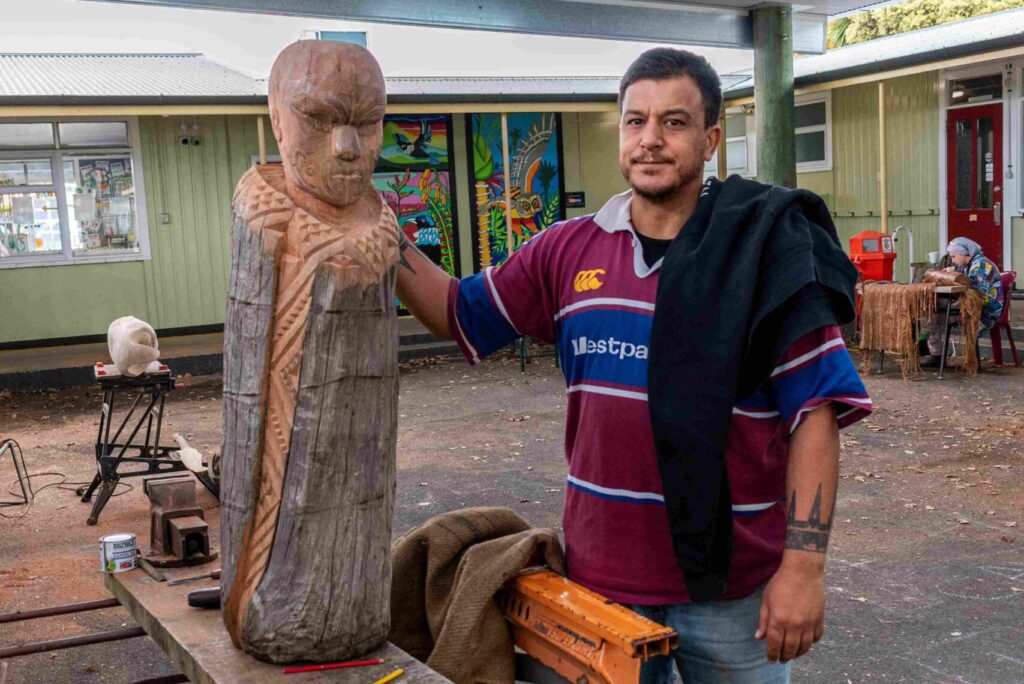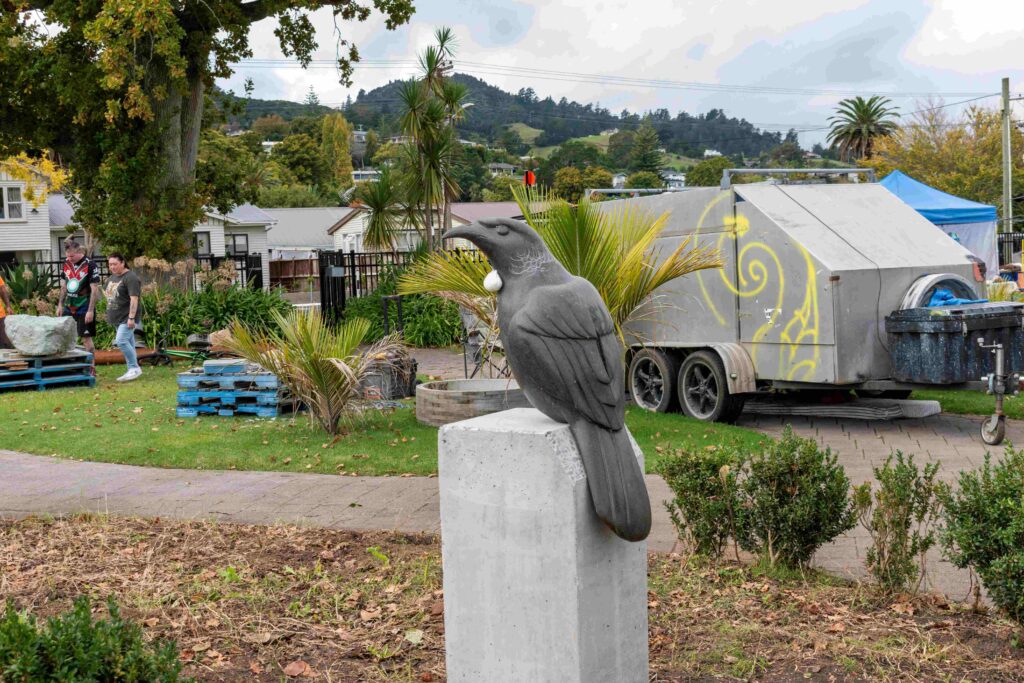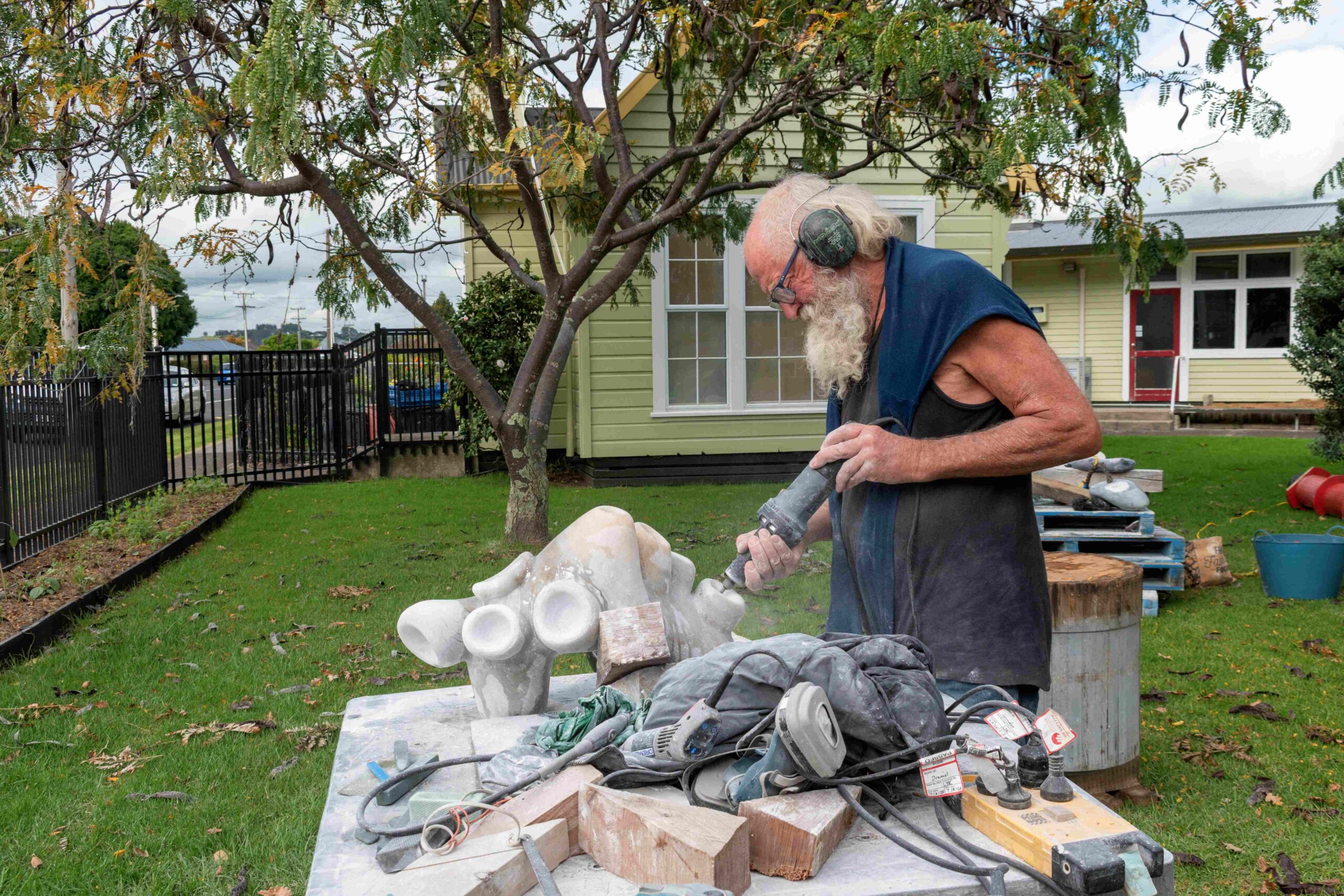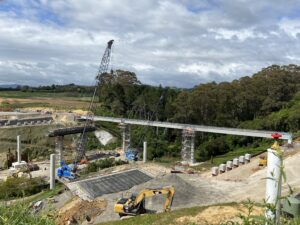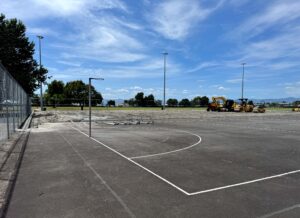Workers in stone, metal and wood came together from April 12-26 for the third annual Ngākau Carving Symposium, hosted by Te Kura O Te Kauaeranga Thames South School.
For two weeks, over 20 artists demonstrated their crafts, in an immersive environment filled with workshops, displays, collaboration and creativity. Everything was open to the public, who were encouraged to come along and see the artists at work. There was also a whānau day on April 20, where people were able to try their hand at carving.
Among the workshops were a wāhine stone sculpting workshop, led by Jocelyn Pratt as she guided 10 keen women on the carving tools; a contemporary take on traditional tukutuku weaving; an outdoor classroom allowing young carvers the chance to try a variety of different tools; a hands-on raranga tutorial making flax flowers; and a session demonstrating various traditional tools and instruments.
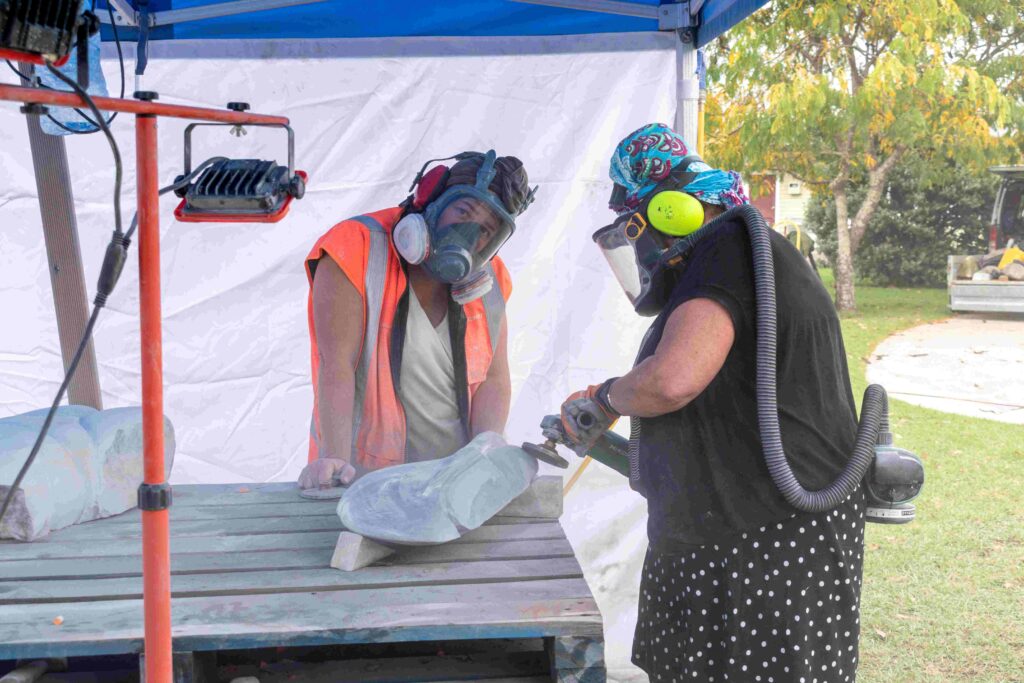
The event culminated in a public auction on April 26, where several finished works were sold to raise funds for the school. Other pieces worked on during the symposium were directly commissioned pieces.
Ngākau’s committee chair Andre Barlow said the event had been fantastic.
“There’s no one else that’s doing this in Hauraki at all… This was my vision three years ago to get to this stage where we had everything here at the school,” she said.
“We’ve had tukutuku, we’ve had weaving, we’ve had mahi toi greenstone, we’ve had kowhaiwhai, and that’s all been open to the public for free. So that’s a whole lot of stuff that we’ve managed to fit into this [event] and cater for.”
Even the stormy weather over Easter weekend couldn’t dampen the artists’ spirits.
“They hunkered down under eaves everywhere, they didn’t stop working,” Andre said.
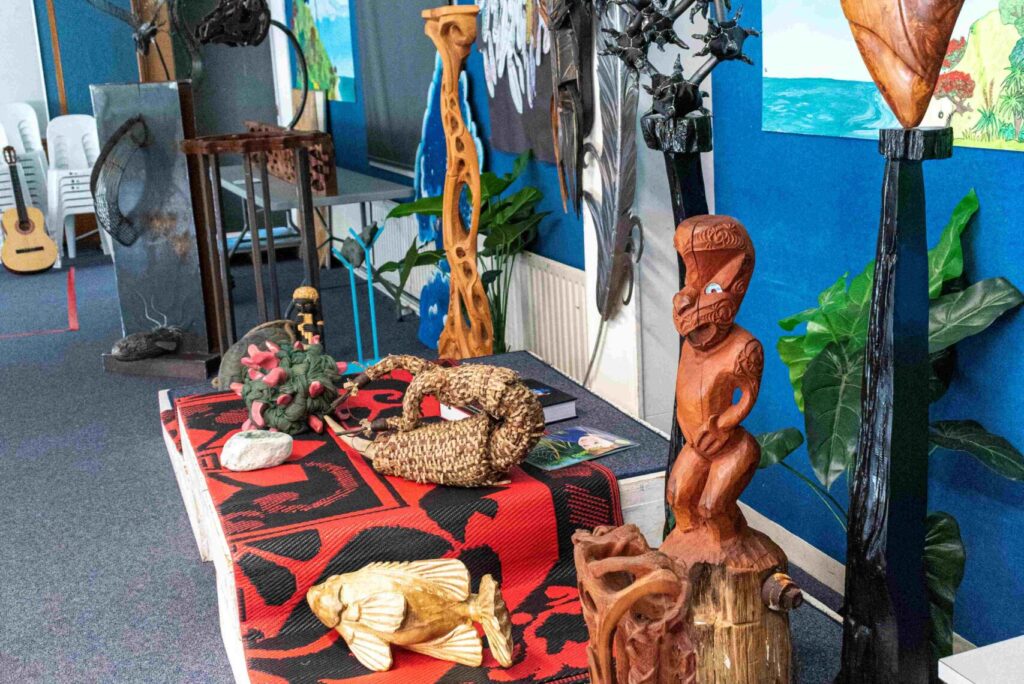
Around the school grounds, artists worked alone or in pairs, and the ideas were flowing as everyone shared advice, tips and techniques.
Joe Dutaona travelled from Papua New Guinea to participate in the symposium. He said he was absorbing as much knowledge as he could from the other artists to take home, living on site and attending workshops alongside his own work.
Much of the materials the artists worked with were reclaimed, found locally, or recycled. Stoneworker Raika Bradshaw-Stevens found the basalt for his Ruru carving in the Kauaeranga Valley; metalworkers Marti Wong and Zharn Hull discussed finding scrap metal at the Seagull Centre.
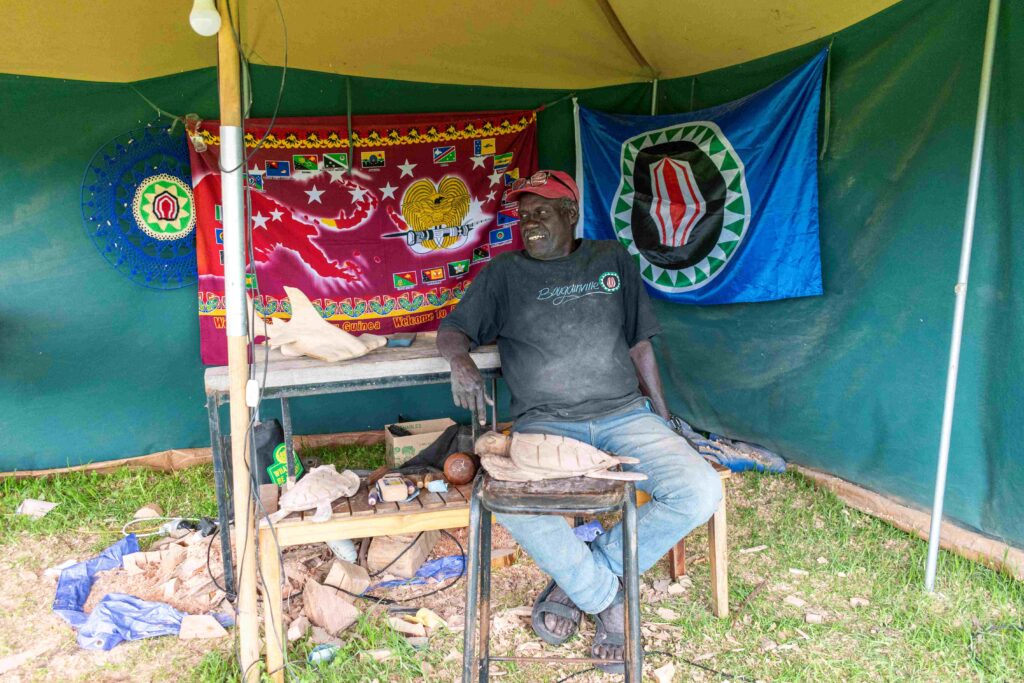
Wood carver Ben Whitaker’s work in progress, meanwhile, began as a reclaimed totara fence post.
“This is about all our journeys, I guess, as Māori today – deconstructing the systems that have put us where we are now and then finding our identity,” he said.
“I kind of get sad – a lot of our big tōtara trees would have been cut down, because it’s a rākau rangatira to us. And the farmers saw the qualities of the timber, but they saw them for their fence posts.
“I like to turn them on their heads, like I’d take an old fence post, and start carving our identity again out of what would have been Tūturu Māori, and then it’s colonised, and then hopefully Tūturu Māori again, or a recipe that’s made up from the fragments of that.”
